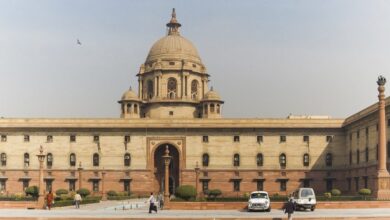New Unified Pension Scheme (UPS) introduced for Government Employees

In a significant move, the Narendra Modi-led NDA government has approved the Unified Pension Scheme (UPS), set to benefit approximately 23 lakh government employees. Announced on August 24, 2024, this new scheme will be implemented from April 1, 2025, marking a substantial shift in India’s civil services pension system.
The UPS effectively reverses a 21-year-old reform introduced by the Atal Bihari Vajpayee government, offering a structure similar to the Old Pension Scheme (OPS). Under the new scheme, government employees are assured 50% of their last drawn pay as a lifelong monthly pension benefit.
On the social media platform X, Prime Minister Modi highlighted the importance of this policy change, saying, “We are proud of all government employees who work hard for the progress of the country. The Unified Pension Scheme (UPS) is designed to ensure the dignity and financial security of these employees. This step demonstrates our government’s commitment to their welfare and a secure future.”
Key Features of the Unified Pension Scheme:
- Eligibility: All Central government employees who retire on or before March 31, 2025, will be eligible for UPS.
- Pension Amount: Retirees with at least 25 years of service will receive a pension equal to 50% of their average basic pay from the last 12 months before retirement.
- Minimum Service: A minimum of 10 years of service is required to be eligible for pension benefits.
- Family Pension: In case of an employee’s death, the family will receive 60% of the pension amount that the employee was receiving at the time of death.
- Minimum Pension: A guaranteed minimum pension of Rs 10,000 per month is provided for those with at least 10 years of service.
- Dearness Relief: The scheme assures periodic dearness relief hikes in line with inflation trends.
- Lumpsum Payment: Employees will receive a lumpsum payment at retirement, equivalent to 1/10th of monthly emoluments for every completed six months of service, in addition to gratuity benefits.

The UPS will be a contributory scheme, with employees contributing 10% of their salary and the government contributing 18.5%. T.V. Somanathan, former Finance Secretary and Cabinet Secretary-designate, noted that the government’s contribution may be adjusted based on periodic actuarial assessments.
Importantly, current National Pension System (NPS) subscribers will have the option to either continue with NPS or switch to the new UPS. Somanathan estimates that it will be beneficial for about 99% of NPS members to move to the UPS.
The introduction of UPS comes after five Opposition-ruled States had moved their employees from NPS back to the Old Pension Scheme. The new scheme aims to balance employee aspirations with fiscal prudence, as per the recommendations of a committee led by Somanathan.
State governments are also open to adopt the architecture of the UPS, potentially widening its impact beyond central government employees.









